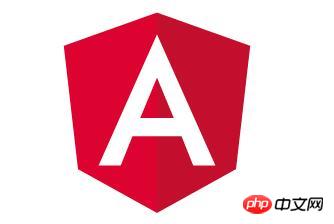Home > Article > Web Front-end > Feature introduction of Angular 5.0
We are happy to announce the release of Angular 5.0.0 - Pentagon Donut! This is another major version, containing new features and fixing many bugs. It once again reflects our consistent goal of making Angular smaller, faster, and better to use. Angular 5.0 is here! With these major changes, this article introduces the major changes in Angular 5.0. Interested friends can refer to it. I hope it can help you.

#The following is a brief introduction to the major changes in v5. To learn more, see the changelog.
Build Optimizer
Starting in 5.0.0, product builds executed via the CLI use the build optimizer by default.
The build optimizer is a tool in the CLI that can make the built package smaller based on our understanding of your Angular application.
Building an optimizer has two main tasks. First, mark certain parts of your application as pure so that existing tools can use it to improve the optimization effect of "tree shaking" and remove unnecessary things from the application.
Secondly, the build optimizer will remove Angular decorator code from your app. Decorators are only used by the compiler and are not used during runtime and can be deleted. Both of the above optimizations can reduce the size of the generated JS package and speed up application startup.
Angular Universal state transfer API and support for DOM
This makes it easier to share application state between the server and the client.
Angular Universal is a project that helps developers perform server-side rendering (SSR). The HTML generated by server-side rendering is friendly to spiders and crawlers that do not support JS, and helps improve user-perceived performance.
In 5.0.0, the development team added ServerTransferStateModule and the corresponding BrowserTransferStateModule. This module can help developers add relevant information to the content generated by server-side rendering and then send it to the client to avoid repeated generation. This is useful for scenarios where data is retrieved via HTTP. By transferring status from the server to the client, the developer does not have to make a second HTTP request. Documentation for the status transfer will be released in a few weeks.
The Angular Universal team also added the platform server Domino to the platform server. Domino supports more out-of-the-box DOM operations in a server-side environment, which can improve our support for non-server-side third-party JS and component libraries.
Compiler improvements
To support incremental compilation, we have improved the Angular compiler. As a result, rebuilding is accelerated, especially for product builds and AOT builds, and the effect is more obvious. We also enhanced the decorator to reduce package size by removing whitespace.
TypeScript conversion
Now, the underlying working mechanism of the Angular compiler is TypeScript conversion, making incremental rebuilds much faster. TypeScript conversion is a new feature of TypeScript 2.3 that allows us to dive into the standard TypeScript compilation pipeline.
With the AOT tag open, you can use the above mechanism by running ng serve.
ng serve --aot
I suggest everyone give it a try. This configuration will become the default for the CLI in the future. Many projects have performance issues involving thousands of components, and we hope projects of all sizes can benefit from these improvements.
When performing an incremental AOT build of https://angular.io, the new compiler pipeline can save 95% of the build time (test results on our development machine are from more than 40 seconds reduced to less than 2 seconds).
Our goal is to make AOT compilation fast enough for developers to use it for development. Now, we have broken into under 2 seconds, so AOT may be enabled by default in future CLIs.
As a transition step to this conversion, we no longer need genDir, and outDir has also changed: now, we will type all the files generated for the package into node_modules.
Keep whitespace
In the past the compiler would faithfully reproduce and include tabs, newlines, and whitespace in templates. You can now choose whether to include whitespace in components and applications.
This configuration can be specified in the decorator of each component, and the current default value is true.
@Component({
templateUrl: 'about.component.html',
preserveWhitespaces: false
}
export class AboutComponent {}Or you can configure it globally in tsconfig.json, where the default value is also true.
{
"extends": "../tsconfig.json",
"compilerOptions": {
"outDir": "../out-tsc/app",
"baseUrl": "./",
"module": "es2015",
"types": []
},
"angularCompilerOptions": {
"preserveWhitespaces": false
},
"exclude": [
"test.ts",
"**/*.spec.ts"
]
}The general rule is that component-level configuration should override application-level configuration. The development team plans to change the default value to false in the future to save space for developers by default. Don't worry about your e03b848252eb9375d56be284e690e873 tags, the compiler will handle them intelligently.
Improved decorator support
Expression lowering in Lambda and object literal useValue, useFactory and data decorators is now supported. This makes it possible to use values that can only be lowered in decorators that can be evaluated at runtime.
So now you can use Lambda functions instead of named functions. In other words, executing the code will not affect your d.ts or your external API.
Component({
provider: [{provide: SOME_TOKEN, useFactory: () => null}]
})
export class MyClass {}我们还会将表达式降级,作为useValue的一部分。
Component({
provider: [{provide: SOME_TOKEN, useValue: SomeEnum.OK}]
})
export class MyClass {}国际化的数值、日期和货币管道
我们写了新的数值、日期和货币管道,让跨浏览器国际化更方便,不需要再使用i18n的腻子脚本(polyfill)。
在以前版本的Angular中,我们一直依赖浏览器及其i18n API提供数值、日期和货币格式。为此,很多开发者都在使用腻子脚本(polyfill),而结果也不好。很多人反馈说一些常见的格式(如货币)不能做到开箱即用。
而在5.0.0中,我们把这个管道更新成了自己的实现,依赖CLDR提供广泛的地区支持,而且可配置。以下是我们对v4和v5所做的比较:a document comparing the pipe behavior between v4 and v5。
如果你还没条件使用新管理,可以导入DeprecatedI18NPipesModule以降级到旧的行为。
StaticInjector代替ReflectiveInjector
为了消除对更多腻子脚本(polyfill)的依赖,我们用StaticInjector代替了ReflectiveInjector。前者不再需要Reflect,为开发者减少了应用大小。
以前
ReflectiveInjector.resolveAndCreate(providers);
以后
Injector.create(providers);
提升Zone的速度
一方面提升了Zone的速度,另一方面也可以在特别关注性能的应用中绕过它。
若要绕过它,启动应用时加上noop:
platformBrowserDynamic().bootstrapModule(AppModule, {ngZone: 'noop'}).then( ref => {} );
这里有一个完整的例子:the example ng-component-state project。
exportAs
组件和指令中增加了对多名称的支持。这有助于用户实现无痛迁移。通过把指令导出为多个名称,可以在不破坏原有代码的情况下在Angular语法中使用新名称。Angular Material项目已经在其前缀迁移项目中用上了,对其他组件作者肯定也有用。
示例
@Component({
moduleId: module.id,
selector: 'a[mat-button], a[mat-raised-button], a[mat-icon-button], a[mat-fab], a[mat-mini-fab]',
exportAs: 'matButton, matAnchor',
.
.
.
}HttpClient
v4.3在@angular/common中推出过HttpClient,用于在Angular中发送请求,它小巧易用。HttpClient受到了开发者的广泛赞誉,因此我们推荐在所有应用中使用它,放弃之前的@angular/http library。
要升级HttpClient,需要在每个模块的@angular/common/http中把HttpModule替换为HttpClientModule,注入HttpClient服务,删除所有map(res => res.json())。
CLI v1.5
从Angluar CLI v1.5开始,已经开始支持Angluar v5.0.0,默认生成v5项目。
在这次小版本升级中,我们默认打开了构建优化器,让开发者拿到更小的包。
我们还修改了使用.tsconfig文件的方式,以更严格地遵守TypeScript标准。此前,如果检测到延迟加载的路由,而且你在tsconfig.json中手工指定了一组files或include,那这些路由会自动化处理。而如今,根据TypeScript规范,我们不再这么干了。默认情况下,CLI对TypeScript的配置中没有files或include,因此多数开发者不会受影响。
Angular表单添加updateOn Blur/Submit
这样可以根据blur或submit来运行验证和更新值的逻辑了,不必再单纯依赖input事件。
表单对应用很重要,如果有服务端验证,或者验证或更新值会触发较慢的操作,你当然希望它少跑几次。现在你可以在控件层面控制验证和更新值的时机了,也可以在表单层面设置。
此外,你现在可以直接在选项中指定asyncValidators,而不是通过第三个参数指定。
模板驱动的表单
以前
8380a0bfeb3febe5885576da5c4747e8
以后
或者